Nude paintings were produced in antiquity and revived during the Renaissance, but there was still something that caused this painting by Manet to be controversial.
Édouard Manet (1832-1883) is often considered one of the 19th century’s most influential artists. Some art historians even refer to him as the “Father of Modernism.”
The French painter was inspired by several similar paintings that have been produced over the centuries and it remained one of his most notable works today.
Let’s take a closer look at some of the most interesting facts about Olympia, the title of a painting by Manet that sent shockwaves through the art community in the 1860s.
1. It took two years to paint in the first half of the 1860s
Édouard Manet was born into a very wealthy family in Paris in the early 1830s. His father was a judge and his other was the daughter of a renowned French diplomat.
His father hoped that his son would enter in his footsteps but he chose a completely different path in life, that of an artist.
He was inspired by several artists in his formative years and traveled extensively throughout Europe between 1853 and 1856. He set up his studio when he came back and started producing Realism paintings.
His main aim was to have his works accepted at the Paris Salon, the most prestigious art exhibition in the world at the time.
He had some success with a portrait of his parents and a work titled “The Spanish Singer,” both completed and exhibited in 1860.
He completed Olympia between 1863 and 1865, a time when he was starting to make a name for himself in Paris.
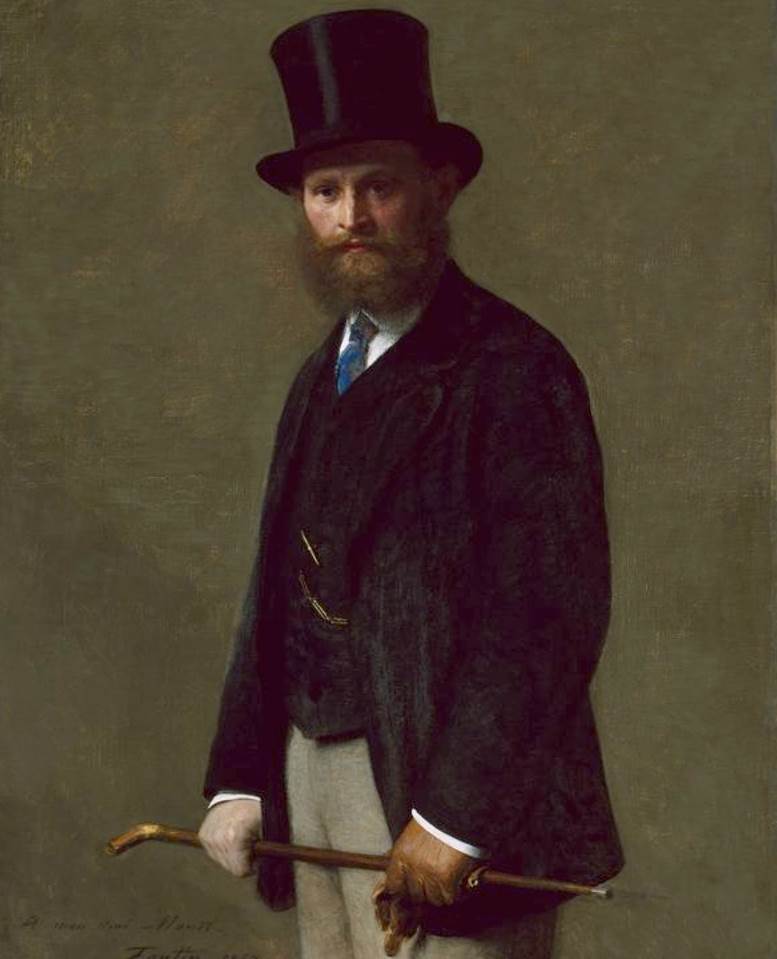
2. The painting depicts a nude woman who is being offered flowers by a servant
The painting depicts a naked woman who is lying on a couch while being offered a bouquet of flowers by a black servant.
The woman stares directly at the viewer and the lighting inside the studio where this scene takes place highlights her extremely pale skin.
This was definitely not a painting that met the standards of academic painting, even though it was accepted at the Paris Salon of 1865.
It’s roughly finished with short brushstrokes, especially compared to the smooth Venus paintings that were the standard at the time.

3. Several elements indicate that the depicted woman was a prostitute
The confrontational gaze of the woman is one of the reasons why this painting was so shocking for contemporary viewers, especially because many elements make a reference that she’s a prostitute.
Some of the most notable elements are:
- The name “Olympia” was a common term to describe a prostitute in Paris during the 1860s.
- The orchid in her hair was something worn by prostitutes to identify themselves on the streets.
- Her left-hand blocks her private parts, indicating she needs money to grant access.
- The black cat is a symbol of nocturnal activity and promiscuity.
- The flowers offered to her might be a gift from a client.
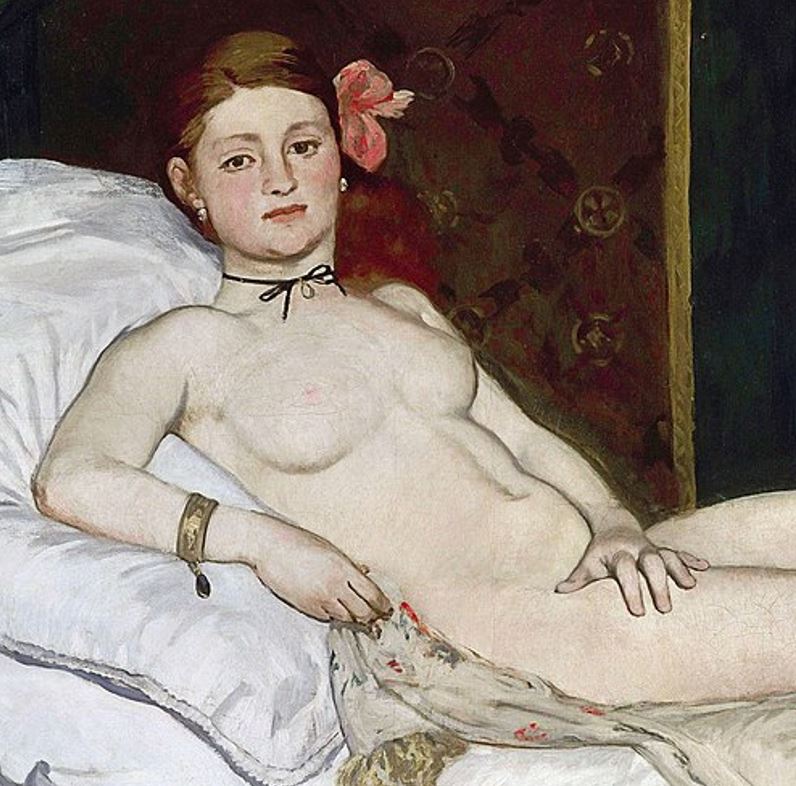
4. The most controversial factor was that the model was a well-known artist
While depicting a prostitute was controversial enough, the fact that many contemporary viewers probably recognized the model was a bit too much for critics.
The model was Victorine Meurent (1844-1927), a woman who had started modeling at the age of 16 and who was also a renowned painter at the time.
She was also the model for Manet’s earlier masterpiece, a work titled “Luncheon on the Grass” (1863). Although this was rejected for the Paris Salon, it was exhibited at the 1863 Salon des Refusés.
Because she was so well-known, seeing her depicted as a prostitute resulted in art critics referring to the painting as “immoral” and “vulgar.” One critic mentioned that:
If the canvas of the Olympia was not destroyed, it is only because of the precautions that were taken by the administration.
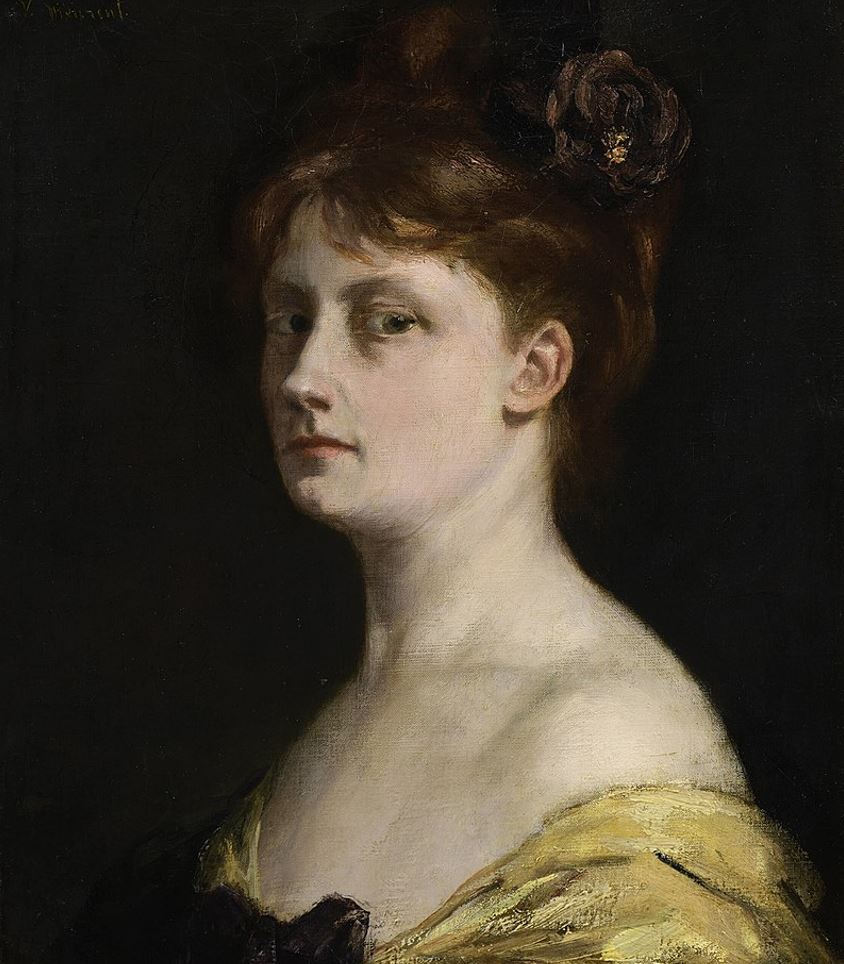
5. The black servant on the right was also a popular art model
The servant on the right is often overlooked because of the striking nude female that absorbed the entire canvas. She was, however, a popular art model as well.
Her name was Laure and that’s about all we know about her. She was either of African or Caribbean descent and her last name is unknown.
Manet already painted Laure in a portrait titled “La Négresse” (1862-63) shortly before he started working on Olympia.
Her role is often underestimated because it’s likely that Manet added her to further highlight the sexuality of the nude woman.
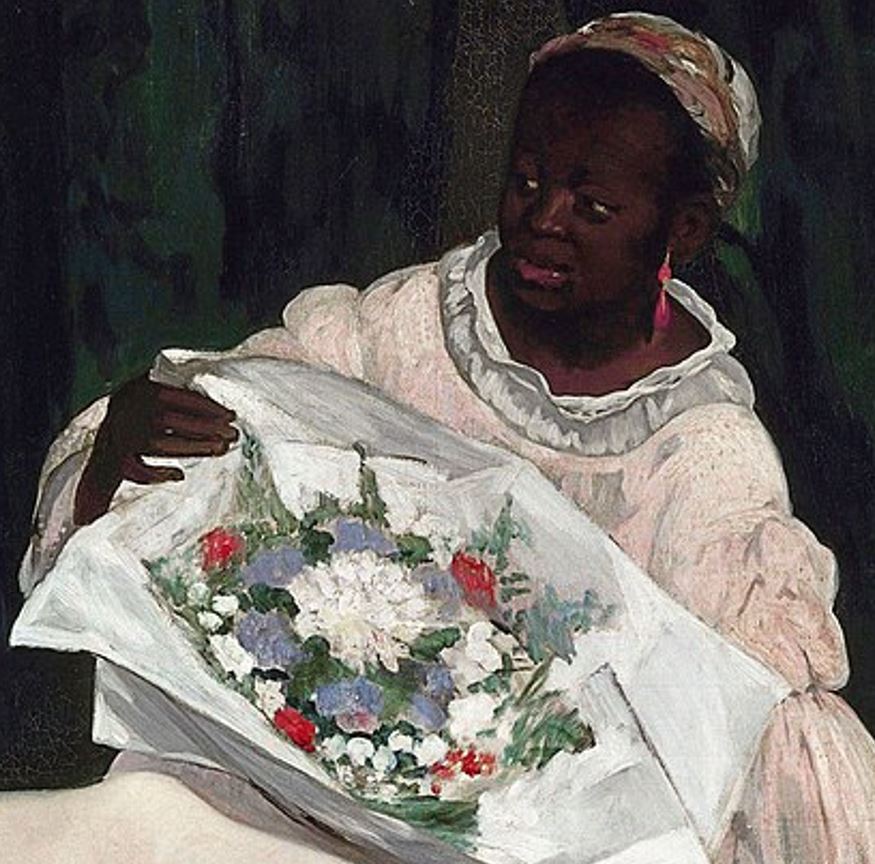
6. The painting was inspired by several similar works of art
There was nothing controversial about the painting of a nude reclining woman. They already appeared in Renaissance paintings many centuries earlier.
The pose of the woman resembles that of a painting by Titian (1488-1576) titled “Venus of Urbino” (1532-1534), one of the artist’s most famous works.

Another source of inspiration was a painting by Francisco Goya (1746-1848), the Spanish artist who painted both a nude and clothed version of the same model.
His painting titled “La Maja Desnuda” (1800) is considered to be the first explicit nude in art history because it shows the woman’s pubic hair.

7. How big is Olympia by Édouard Manet?
What’s remarkable about this masterpiece by the French artist is that it’s fairly big, an additional element of why it was so controversial at the time.
Olympia by Édouard Manet is a large oil on canvas painting that has dimensions of 130.5 × 190 centimeters (51.4 × 74.8 inches).
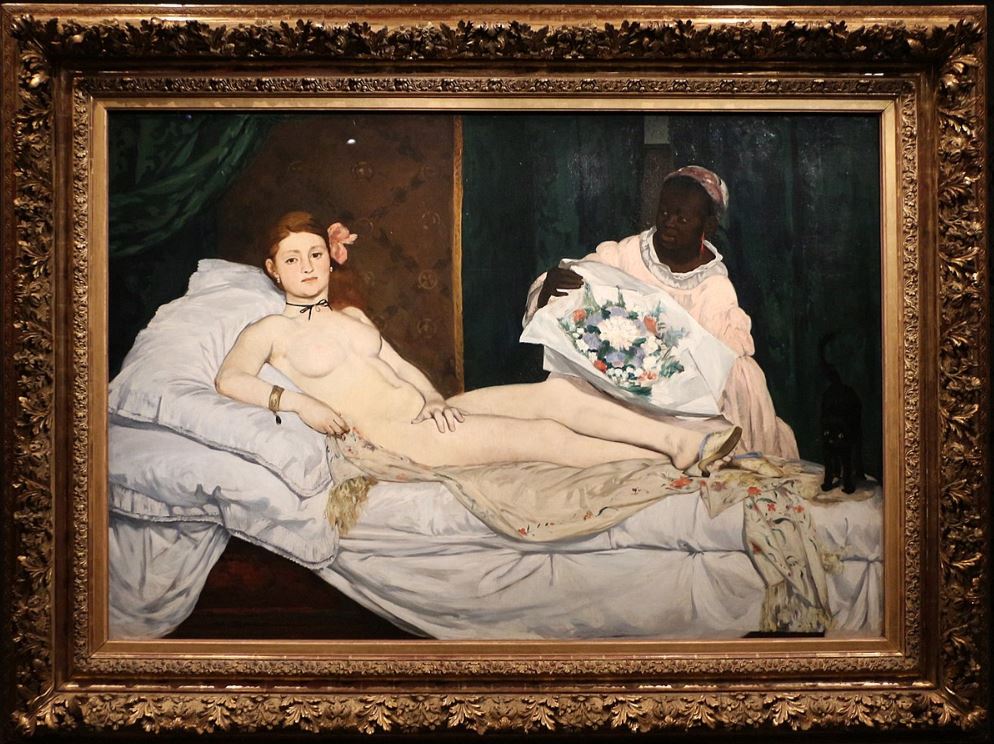
8. Where is Manet’s painting located today?
The controversial painting was never sold during Manet’s lifetime because he passed away in 1883.
About 7 years later, one of his colleagues and friends Claude Monet (1840-1926) recognized the tremendous value of the painting and he urged the French government to acquire it.
It was bought by the French state in 1890 and initially housed at the Musée du Luxembourg (1890-1907) and the Louvre Museum (1907-1986) before being moved to its current location.
If you want to admire Manet’s famous paintings then you have to head over to the Musée d’Orsay in Paris as it’s still part of the museum’s collection today.



